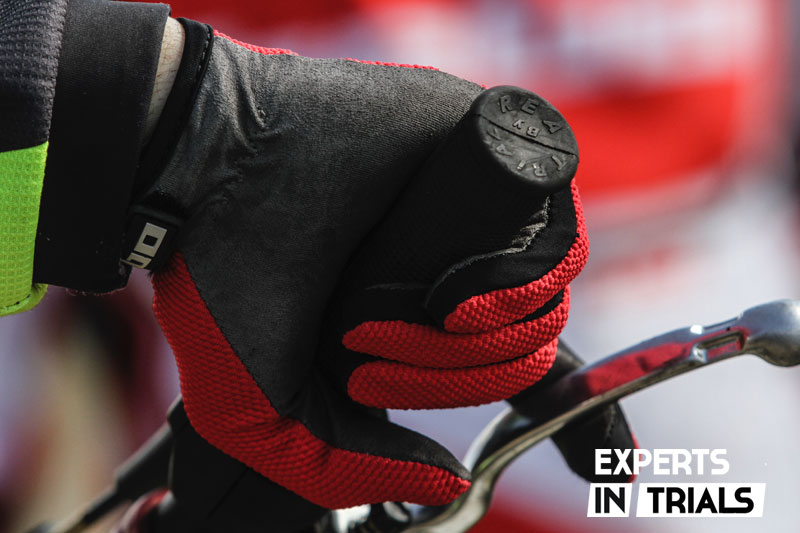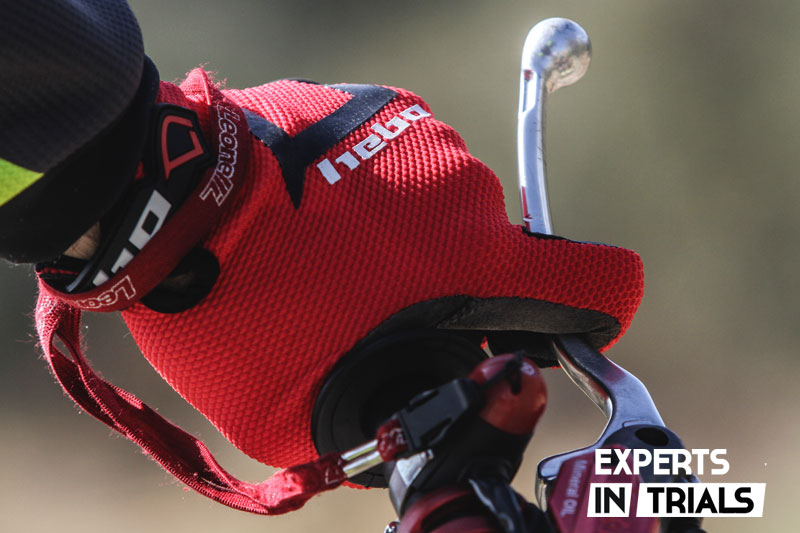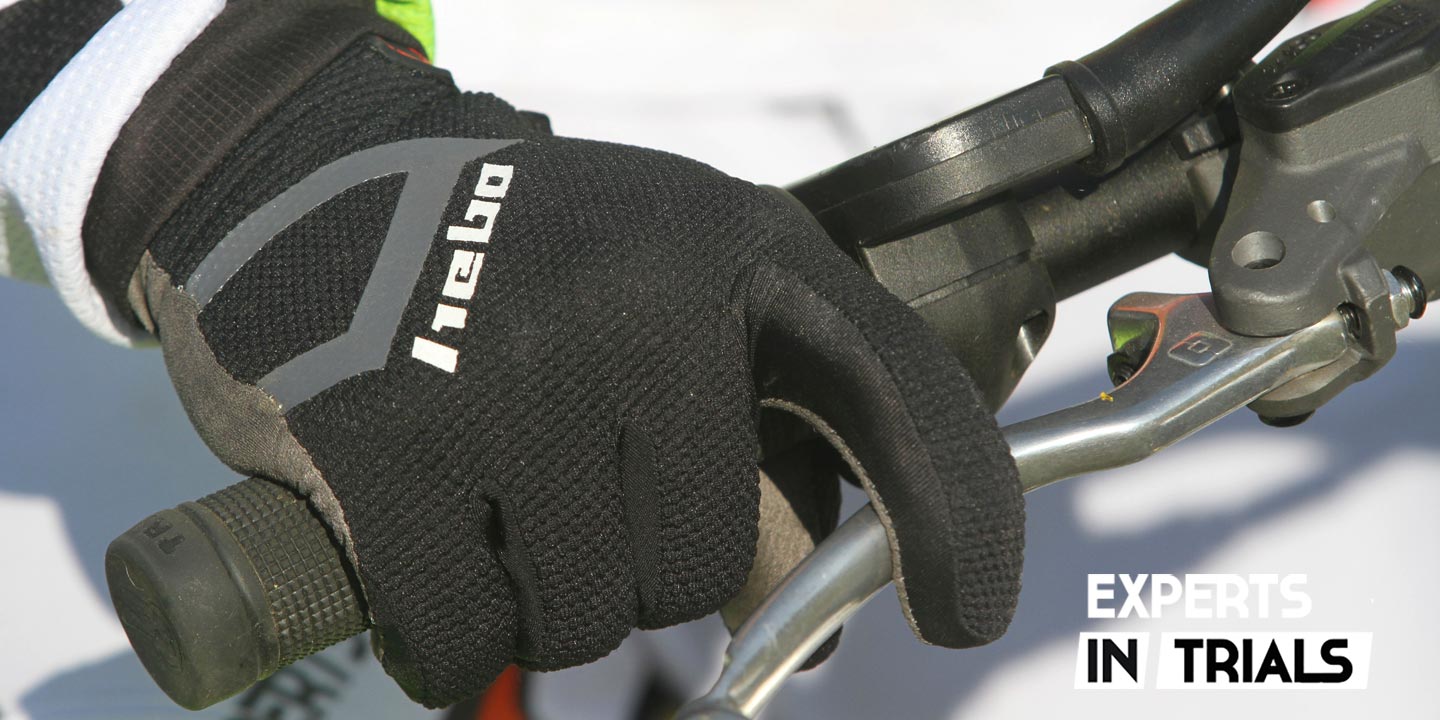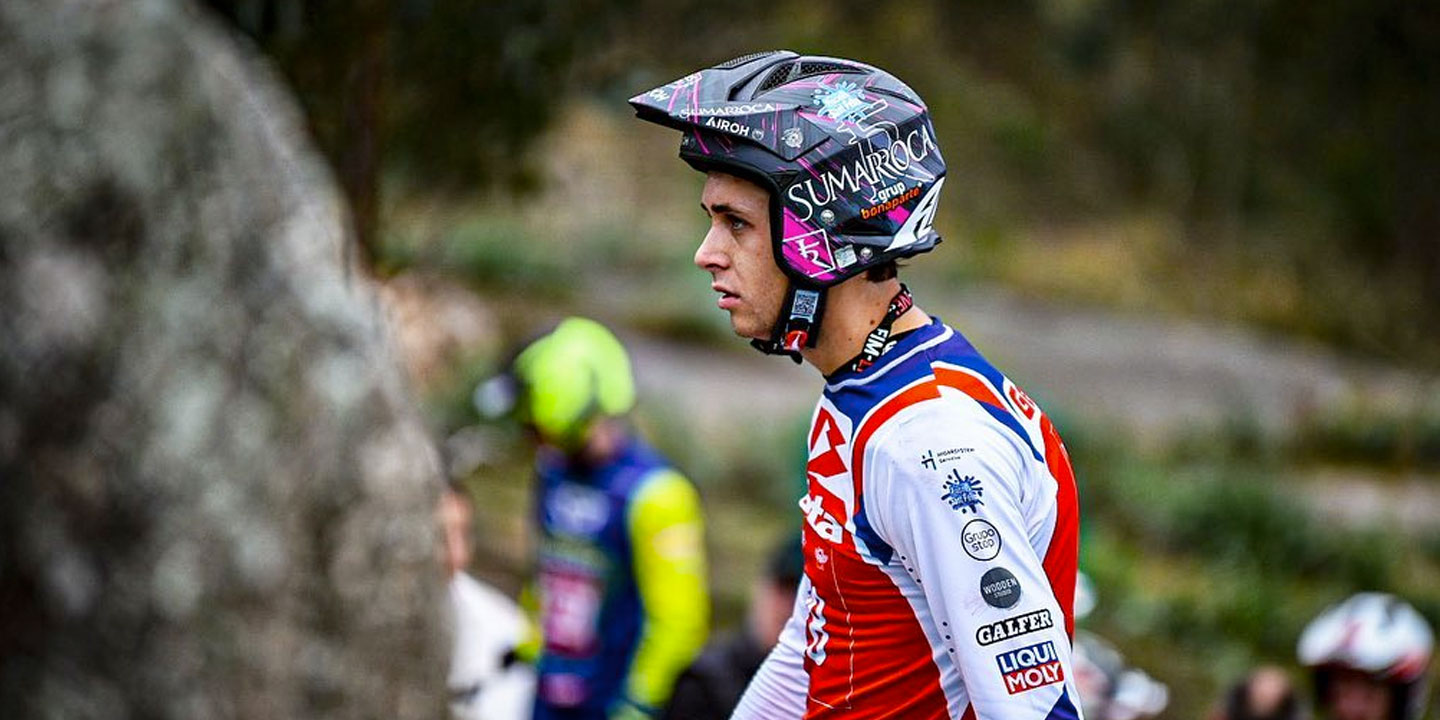And this brings us to a number of questions.
Have you ever realized that together with the footpegs they are the only point of contact between rider and bike? Can some grips favor my riding more than others? How to identify its wear?
Let’s answer all these questions. Grips are a vital part of your bike, so much so that it can completely ruin a morning of trials.
When it comes to riding, it is necessary to remember that we exert the maximum gesture of support when we raise the front end but also great support when we compress the suspensions or brake.
These clamping and pushing forces are not transmitted precisely when one of the grips moves due to moisture, is poorly positioned, or simply because the grip compound produces an abrasion in the palm of the hand that prevents us from holding on to the handlebars.
All these situations provoke imprecise reactions that make an important difference in a discipline as technical as trial.
The grips are a key point for the performance of the trial bike, as it determines your comfort and the rider's synchrony with the bike. In this report we explain the keys to its maintenance, assembly and the grips that best adapt to your riding
Problems Grips of the Trial Bike
1) Wet grips that move over the handlebars
They dissipate the force exerted by the rider when pulling on the handlebars and unbalance the position of the rider’s body. This moisture can appear as a result of a fall on a wet surface. There, if the grip has cracks, the water penetrates and it is no longer fixed on the handlebars, being able to rotate freely without support.
2) The compound and arrangement of the cuff cleats are not adapted to the needs of the rider
Abrasion and wounds on the palm of the hand can prevent a firm grip on the handlebars.
3) Asymmetrically placed grips that cause strange reactions in the pilot.
The grips are always the rider’s reference when it comes to gripping the handlebars, but what if they have moved in position with the humidity and falls?
4) Left grip shifted to the inside of the handlebars.
By exerting the same traction on both arms at different points on the handlebars, the bike will drift to the right.
5) Right grip shifted to the inside of the handlebars
Same situation but in this case the bike will veer to the left.

Types of Trial Bike Grips
1. According to its hardness:
> Bi-compound: The rubber from which the grip is made has a hard compound. They are harder to the touch and have less grip because the adhesive force exerted by the rider on the handlebars does not deform the grip. This is the case with the
Domino Bi polymer
> Mediums: Compound with an intermediate hardness with grip and neutral feel. This is the case with the
Renthal Medium grips
.
> Soft: The rubber of the grip is made of a soft compound. They have more grip and are more comfortable to the touch. On the other hand, they wear out very quickly. This is the case with the
standard grips.
2. According to the arrangement of the cue:
We can take as an example the difference between a field tire and an asphalt tire.
> Low and close heel: Perfect for dry climates, they protect the rider from palm abrasion. If it rains, the grip is low.
> High & Separated Heel : Great grip in wet weather or on muddy terrain. In dry climates, they cause a lot of abrasion on the palm of the hand.
The Best Trial Grips
> Bypolimer Domino Grips. They are bi-composite, with more hardness at the ends for greater strength. Outstanding performance.
> Renthal Medium Grips. Probably the most popular among fans and pilots.

> Standard trial grips. Very good feel and soft, but with less durability. They are the ones that carry the standard trial bikes.
How to install grips on a motorcycle?
1. Cleaning the handlebars:
The first step is to remove any remaining grease that may remain on the surface where the grips are installed. Ideally, you should use brake cleaners or pure alcohol.
2. Assembling the grips:
We recommend these two alternatives, avoiding any type of soap.
> With pressurized air: We will use a pressurized air compressor. We will introduce air through the inner end of the grip so that it swells and enters the handlebars. Once mounted, remove all the air so that the grip sits well on the handlebars.
> Brake cleaner: If you don’t have a compressor, you can apply brake cleaner to the inside of the grip and insert it into the handlebars.
The liquid will evaporate after a few seconds and become well fixed.

How to extend the life of the fists?
1) Mounting
handlebar stops for trial bikes
:
Grips are usually replaced sooner due to breakage than wear. Normally, when we fall, the outside of the fist is damaged and from there moisture and dust have free rein to accelerate its deterioration. Handlebar stops are a good option to avoid this problem. Here are several handlebar stops for trial bikes
2) Attach
Fist Wire
:
Perfect for attaching the rubber to the handlebars and preventing moisture from penetrating the inside of the grip. Here’s wire for motorcycle grips.
3) Apply
cuff glue
:
There are glues for trial grips that adhere the rubber to the handlebars preventing the movement of the grips.
In our opinion, there is no one set of fists that is perfect for all types of riders and weather, but there is one that is perfect for each of us. Trial is a discipline of touch and precision, being comfortable on the bike is essential and you have grips of all compounds and brands from 9 to 20 euros.












